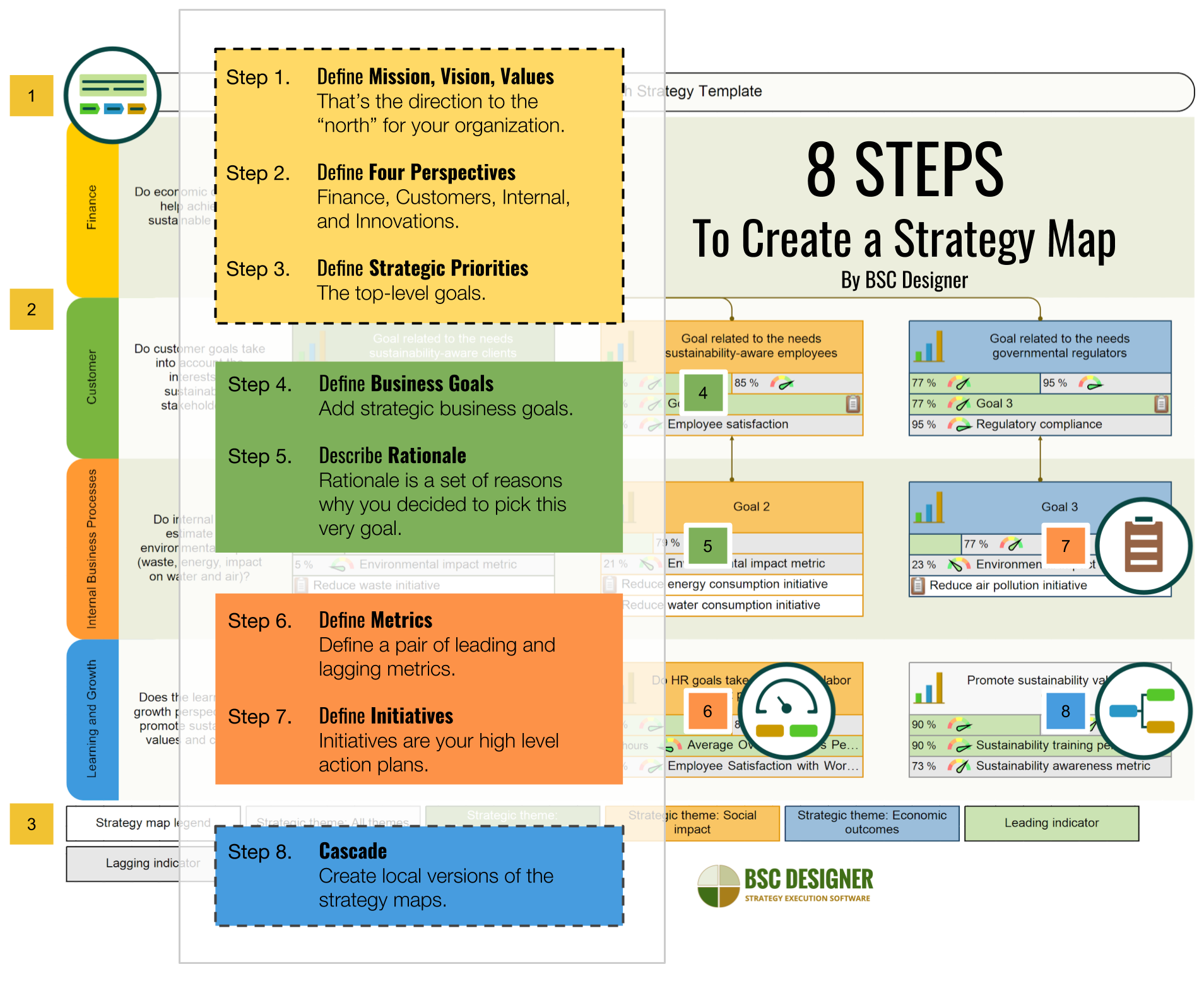Navigating the business landscape can be a daunting task. With countless factors to consider and seemingly endless competition, staying ahead of the game is crucial. This is where a solid business strategy comes in. Today, we will delve into a practical approach known as the 8-Step Strategy Map. This framework will help you understand your organization’s goals and create a clear path to achieving them. The following image serves as a guide for the rest of our discussion:

Step 1: Define Your Vision. Begin by defining your organization’s vision. This should encompass your company’s long-term aspirations and provide a clear direction for your team. Your vision should be ambitious, inspiring, and aligned with your company’s values.
Step 2: Set Your Mission. Your mission statement should outline your organization’s purpose and how it aims to impact positively. It should be specific enough to guide decision-making and keep your team focused on a common goal.
Step 3: Identify Strategic Objectives. Strategic objectives are the high-level goals that your organization wants to achieve. These objectives should be SMART: Specific, Measurable, Achievable, Relevant, and Time-bound. They should be in line
with your vision and mission, and provide a clear roadmap for success.
Step 4: Develop Key Performance Indicators (KPIs). Key Performance Indicators are quantifiable metrics that help you track progress toward your strategic objectives. KPIs should be relevant and actionable and provide insight into your organization’s performance. By regularly monitoring KPIs, you can make informed decisions and ensure you stay on track to achieve your goals.
Step 5: Establish Strategic Initiatives. Strategic initiatives are your organization’s key projects or programs to achieve its strategic objectives. These initiatives should be prioritized based on their potential impact, available resources, and alignment with your overall strategy.
Step 6: Allocate Resources. Resource allocation is crucial to the success of your strategic initiatives. Determine the financial, human, and technological resources needed to execute each initiative. Ensure that resources are allocated effectively and efficiently to maximize the return on investment.
Step 7: Monitor Progress. Regularly review your strategy map to ensure your organization can achieve its goals. This involves monitoring KPIs, evaluating the effectiveness of strategic initiatives, and making any necessary adjustments. Monitoring progress enables you to identify and address any issues that may arise and helps maintain momentum toward your objectives.
Step 8: Communicate and Engage. Effective communication is essential for a successful strategy. Share your strategy map with your team, ensuring everyone understands the vision, mission, objectives, and their role in achieving them. Encourage open dialogue, and provide opportunities for feedback and collaboration. Engaging your team in the strategic process will foster a sense of ownership and commitment to the company’s success.
The 8-Step Strategy Map is a powerful tool for organizations seeking long-term success. Following this framework, you can create a clear, actionable roadmap that aligns your team, optimizes resources, and drives results. Remember that the journey to success is continuous, and regularly reviewing and adjusting your strategy is crucial to staying ahead in a competitive landscape. Invest time in building a strong strategy map, and empower your organization to thrive in today’s dynamic business environment.
















